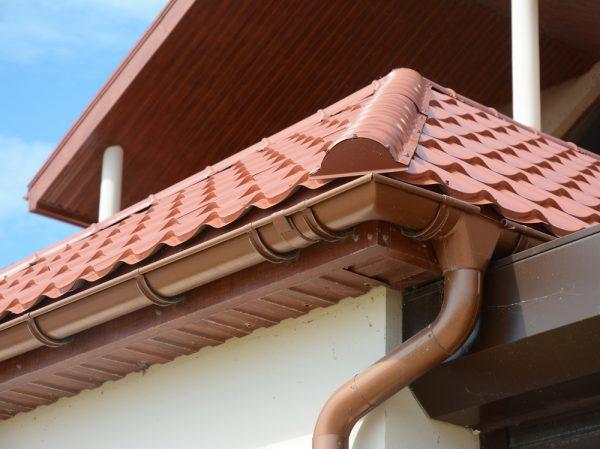Discover the feasibility and considerations of replacing gutters without the need to replace your entire roof. Learn about the benefits, challenges, and steps involved in this home improvement project.

Can You Replace Gutters Without Replacing Roof?
When homeowners face the need to replace their gutters, a common question arises: can you replace gutters without replacing the roof? The short answer is yes, it’s possible in many cases to replace gutters independently of the roof. However, several factors influence the decision and process, ensuring both functionality and aesthetics of your home.
Understanding the Relationship Between Gutters and Roof
Gutters are essential for directing rainwater away from your home’s foundation, preventing water damage and erosion. Over time, gutters can become clogged, damaged, or outdated, necessitating replacement to maintain their effectiveness. On the other hand, a roof protects your home from the elements and contributes to its overall structural integrity. While gutters and roofs serve distinct purposes, their maintenance and replacement can overlap.
Factors to Consider Before Replacing Gutters
Condition of Existing Gutters
Assess the condition of your current gutters to determine if replacement is necessary. Look for signs of rust, corrosion, sagging, or leaking that compromise their functionality. If your gutters are beyond repair or ineffective, replacement may be the best solution.
Roof Age and Condition
Evaluate the age and condition of your roof. If your roof is relatively new and in good condition, replacing only the gutters may suffice without impacting the roof’s integrity. However, if your roof is nearing the end of its lifespan or has existing issues, it may be more practical to address both gutters and roof simultaneously.
Compatibility with Roof Design
Consider how new gutters will integrate with your roof design. Different roofing materials and styles may require specific gutter configurations or installation techniques to ensure proper functionality and aesthetic harmony.
Benefits of Replacing Gutters Independently
Cost-Effective Solution
Replacing gutters without replacing the roof can be a cost-effective home improvement project. It allows you to focus your budget on addressing specific issues related to gutter performance and aesthetics without incurring the additional expense of a roof replacement.
Improved Water Management
New gutters enhance water management around your home, reducing the risk of water damage to the foundation, siding, and landscaping. Upgrading to seamless gutters or installing gutter guards can further improve efficiency and reduce maintenance requirements.
Enhanced Curb Appeal
Updated gutters can enhance the appearance of your home’s exterior. Choose from a variety of materials, colors, and styles to complement your home’s architecture and personal taste, boosting curb appeal and potentially increasing property value.
Challenges and Considerations
Compatibility Issues
Ensure that new gutters are compatible with your existing roof structure and drainage system. Improper installation or mismatched components can lead to performance issues and costly repairs down the line.
Structural Integrity
While replacing gutters alone typically does not affect the structural integrity of your roof, it’s essential to hire a professional installer who understands the interplay between gutters and roofing systems. Proper installation techniques ensure optimal performance and longevity.
Future Roofing Plans
Consider any future plans for roof replacement or renovations. If your roof is nearing the end of its lifespan or if major repairs are anticipated in the near future, coordinating gutter replacement with roofing work may be more practical and economical in the long term.
Steps to Replace Gutters Without Replacing Roof
Inspection and Assessment
Begin by conducting a thorough inspection of your existing gutters and roof. Identify areas of concern, such as leaks, damage, or inadequate drainage, that necessitate replacement.
Consultation with Professionals
Consult with a reputable gutter installation company or roofing contractor to discuss your options. They can provide expert advice on gutter materials, installation techniques, and compatibility with your roof.
Material Selection
Choose high-quality gutter materials that suit your climate and aesthetic preferences. Options include aluminum, vinyl, steel, or copper gutters, each offering unique benefits in terms of durability, appearance, and maintenance requirements.
Professional Installation
Ensure that gutters are installed professionally to ensure proper alignment, secure attachment to fascia boards, and adequate slope for water drainage. Professional installers have the expertise and equipment to complete the job safely and efficiently.
Maintaining Gutters and Roof Health
Regular Maintenance
Maintain gutters by cleaning them regularly and inspecting for debris, leaves, or blockages that can impede water flow. Schedule seasonal maintenance to remove accumulated debris and ensure gutters remain clear and functional.
Roof Inspection
Periodically inspect your roof for signs of damage, wear, or potential issues that may affect gutter performance. Addressing roof maintenance promptly can extend its lifespan and support the longevity of your gutter system.
Read too: Is It Reasonable to Ask the Seller to Replace the Roof?
Conclusion
In conclusion, replacing gutters without replacing the roof is a viable option for homeowners seeking to improve water management and enhance the appearance of their homes. By considering the condition of existing gutters, roof age, compatibility with roof design, and future plans, homeowners can make informed decisions that align with their budget and maintenance goals.
Whether you choose to tackle gutter replacement as a standalone project or coordinate it with roof maintenance, prioritizing professional installation and regular upkeep ensures optimal performance and long-term satisfaction. Take proactive steps to protect your home’s exterior and maintain its value through thoughtful gutter and roof maintenance practices.



Leave a Reply